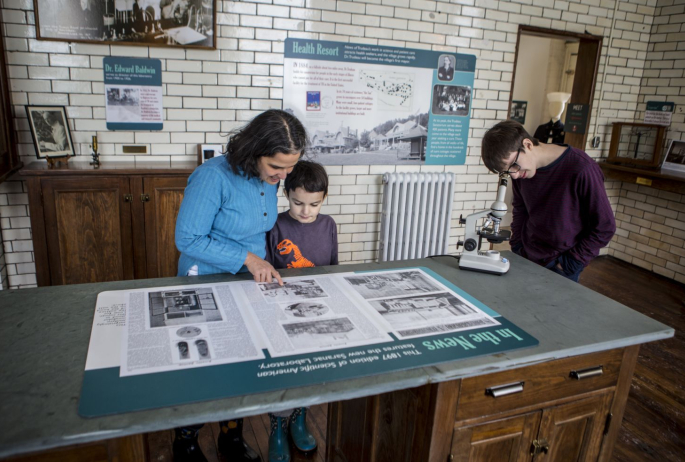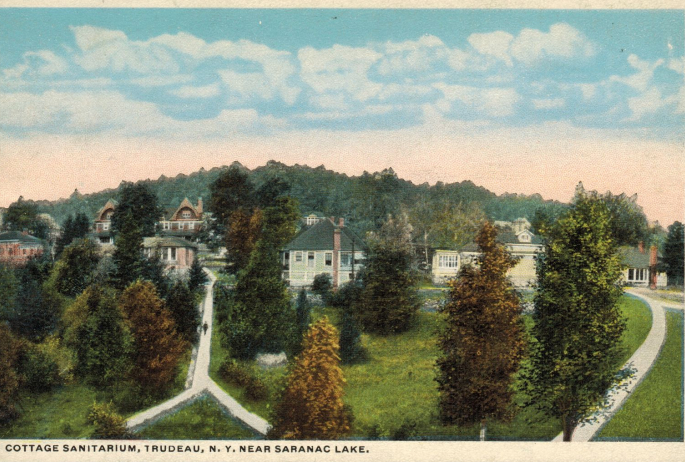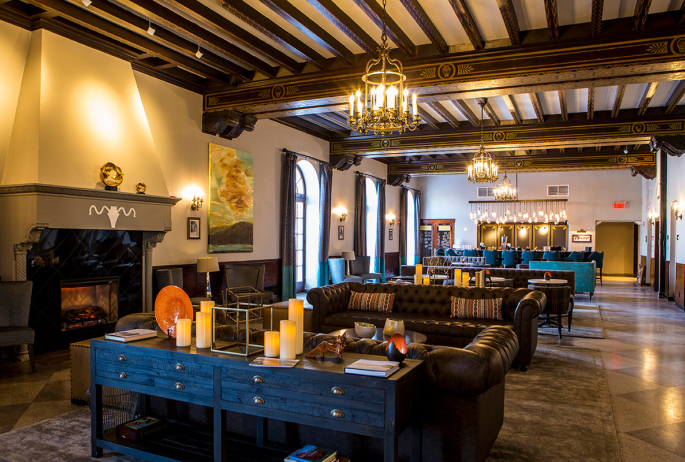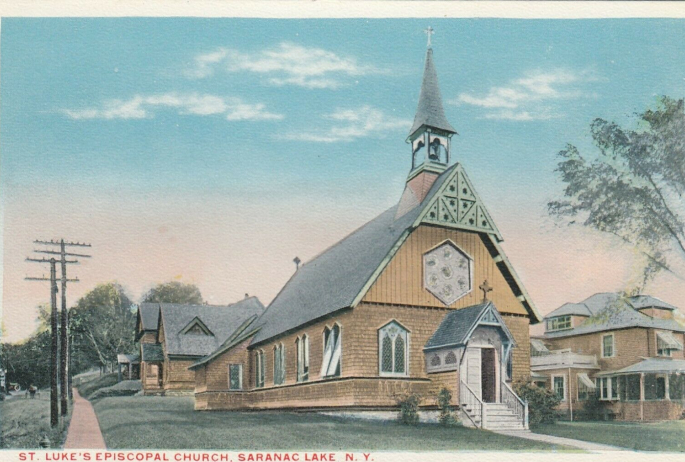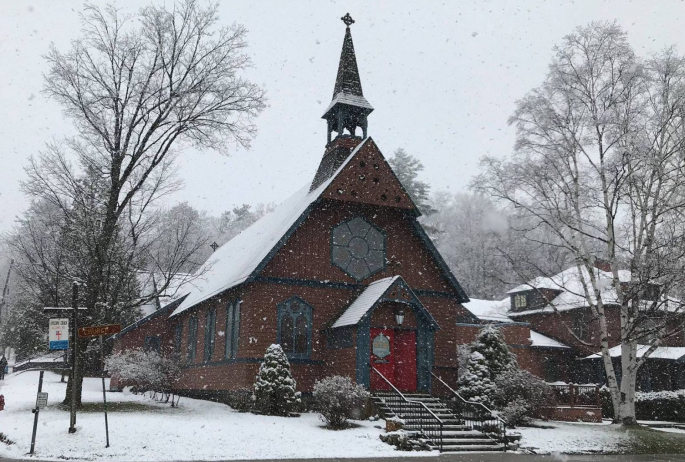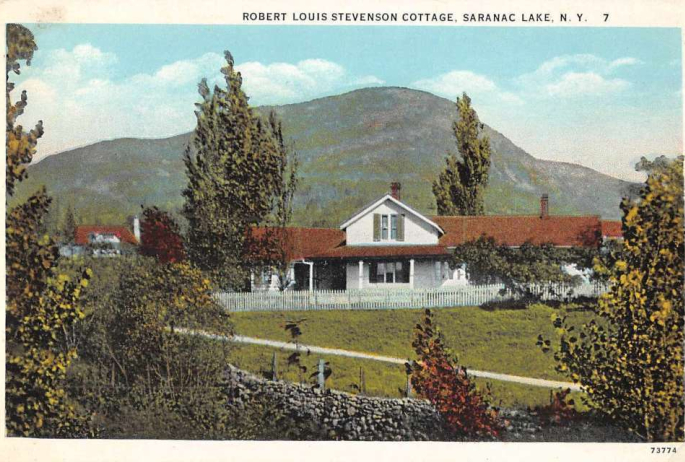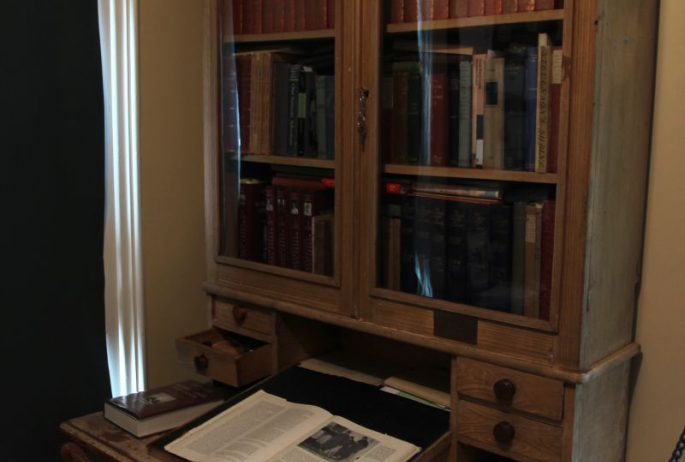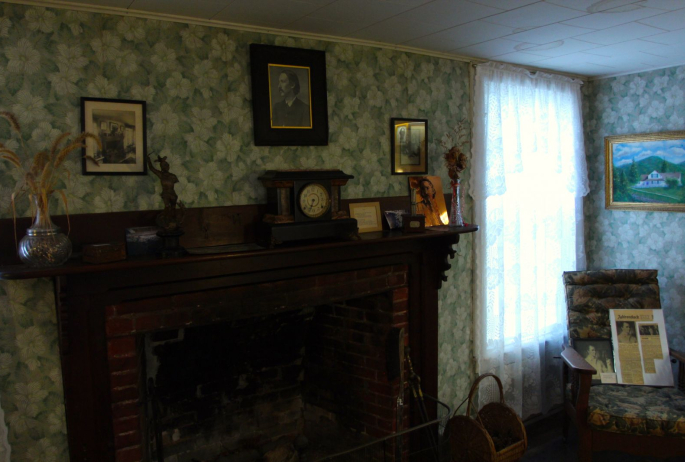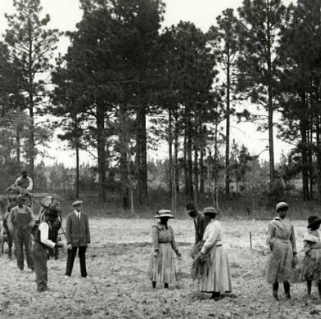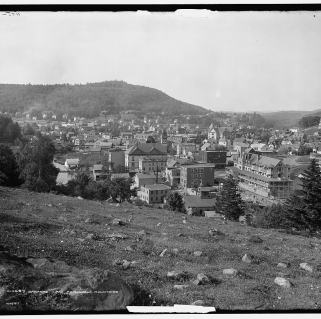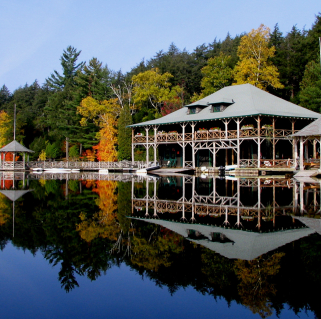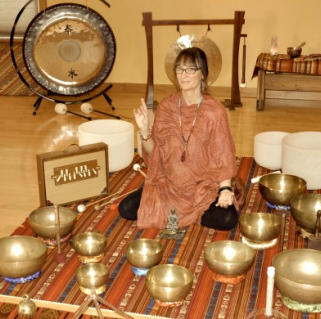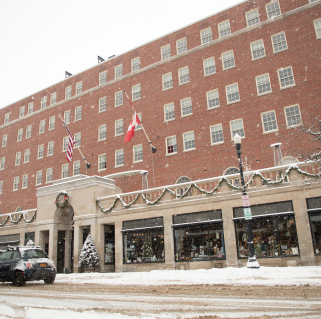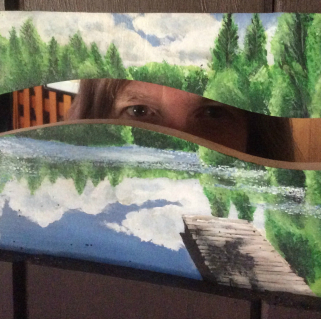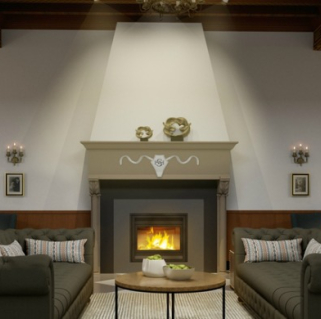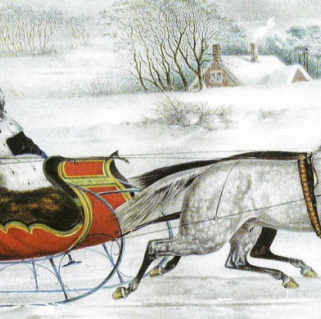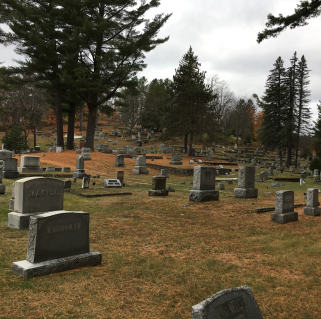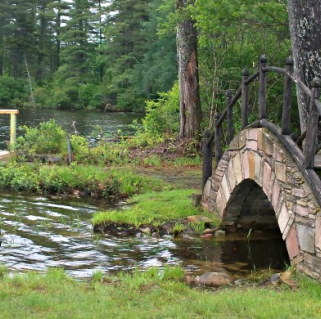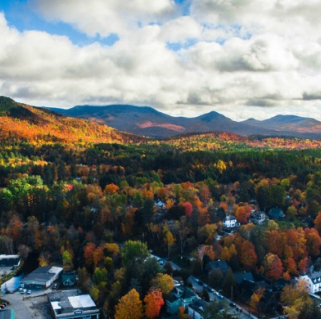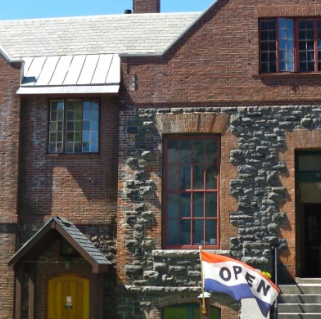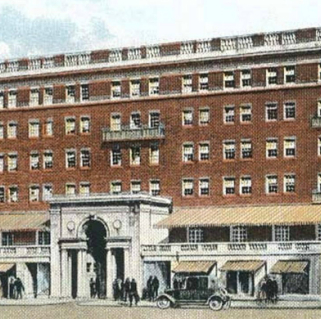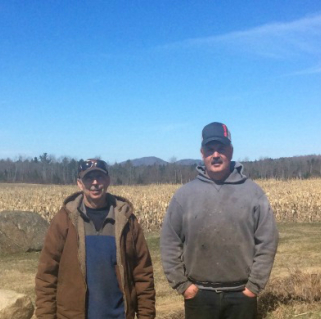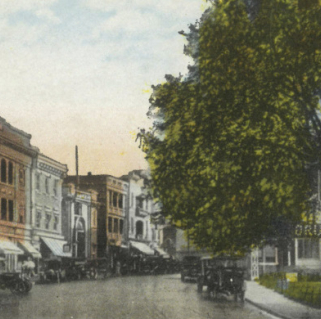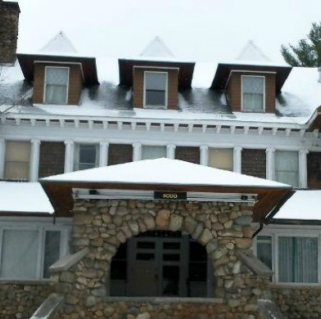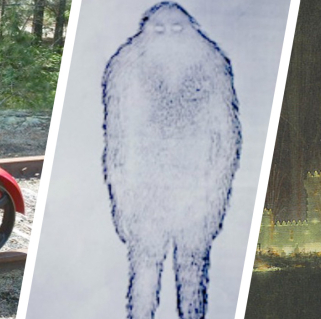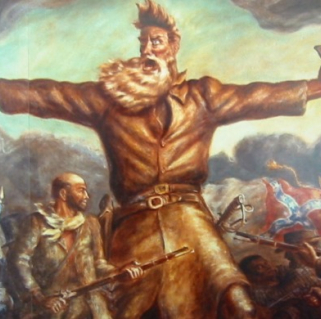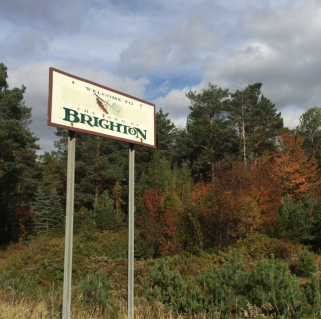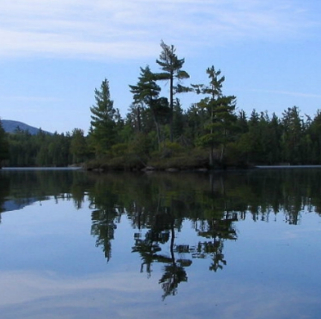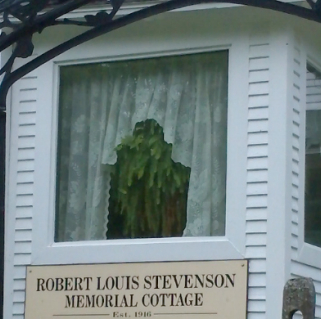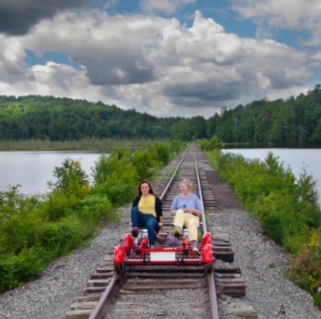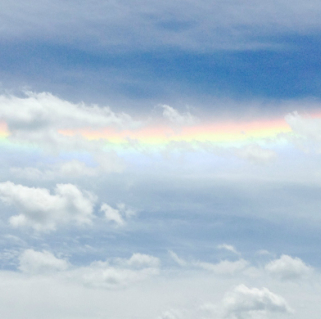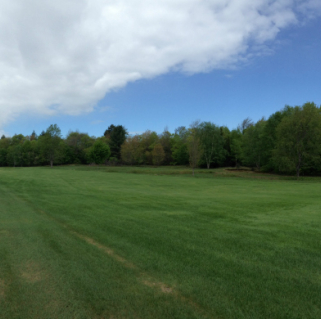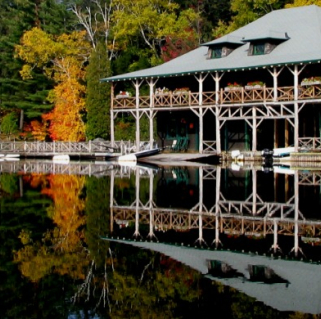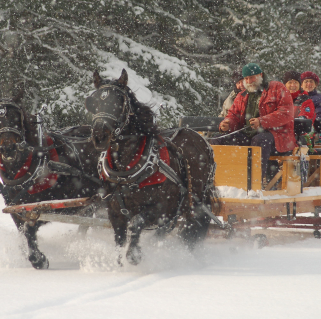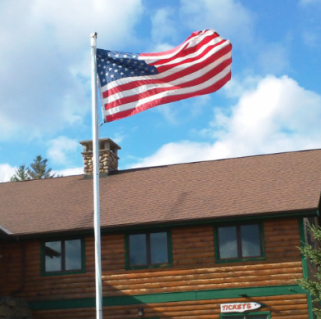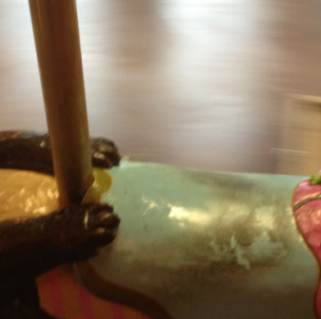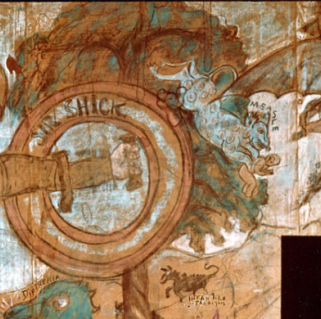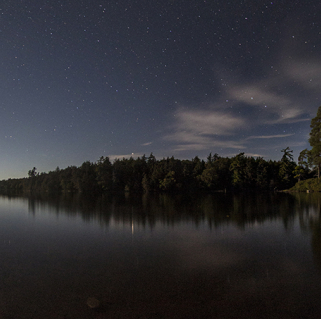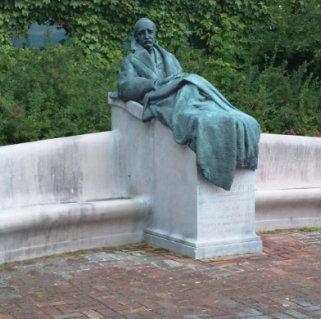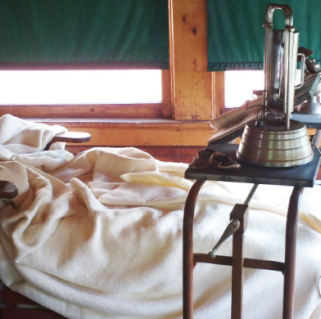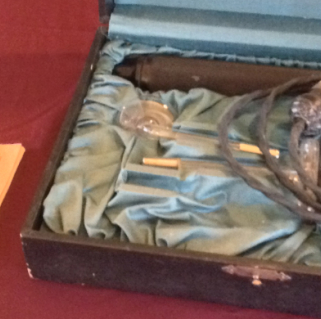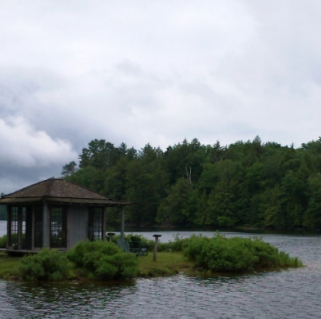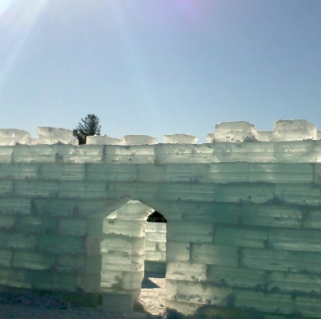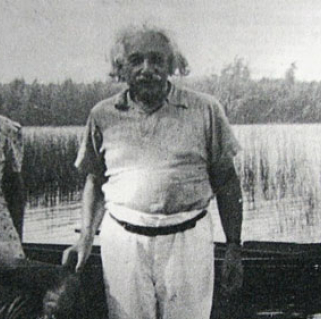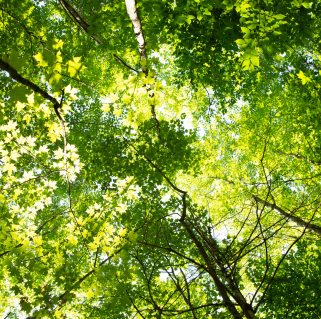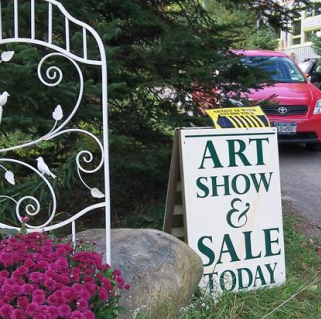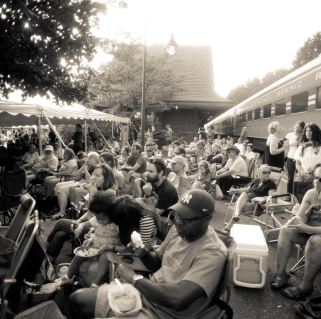In Saranac Lake, we love our history. From the region's earliest inhabitants — the Iroquois people who hunted here — through the first 19th century settlers to the development of the village as a health resort, Saranac Lake has plenty of stories to tell. We celebrate these stories in a lot of ways, including at museums, special events, and through unique tours. We especially love to share the history of our area with visitors. The next time you're in Saranac Lake, travel back in time with us at these fascinating historic sites.
Saranac Laboratory Museum
For visitors or anyone new to Saranac Lake with an interest in history, the Saranac Laboratory Museum, home of Historic Saranac Lake, is a perfect place to start a trip into the past. Built in 1894, the building was the laboratory of Dr. Edward Livingston Trudeau, a medical pioneer whose work in the treatment of tuberculosis changed Saranac Lake forever.
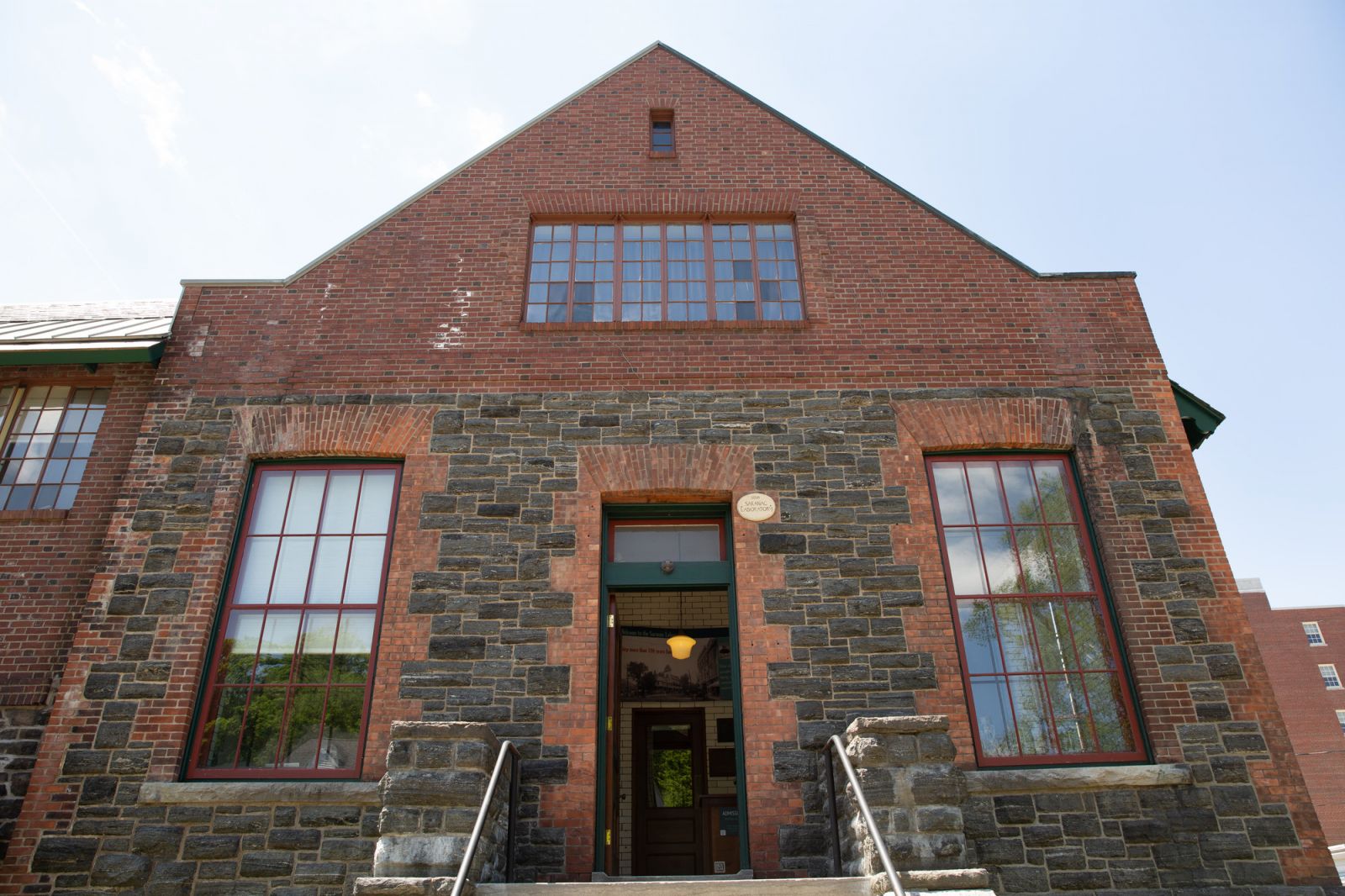
Himself a sufferer of tuberculosis, Trudeau arrived in the Adirondacks in 1876, taking up residence at Paul Smith's Hotel on Lower Saint Regis Lake. In the fresh, clean air of the Adirondacks, Trudeau's health improved and his efforts to create a sanitarium — a place where patients suffering from tuberculosis could receive the "fresh air cure" — began.
Eventually, Dr. Trudeau built a home on the corner of Main and Church streets, along with a laboratory to conduct research. His first lab burned down, and it was thanks to a confident supporter that his new lab was built of fireproof brick. Today, the lab contains exhibits on Dr. Trudeau's story, his life's work trying to cure tuberculosis, and some of the individuals who came to the village to take the cure.
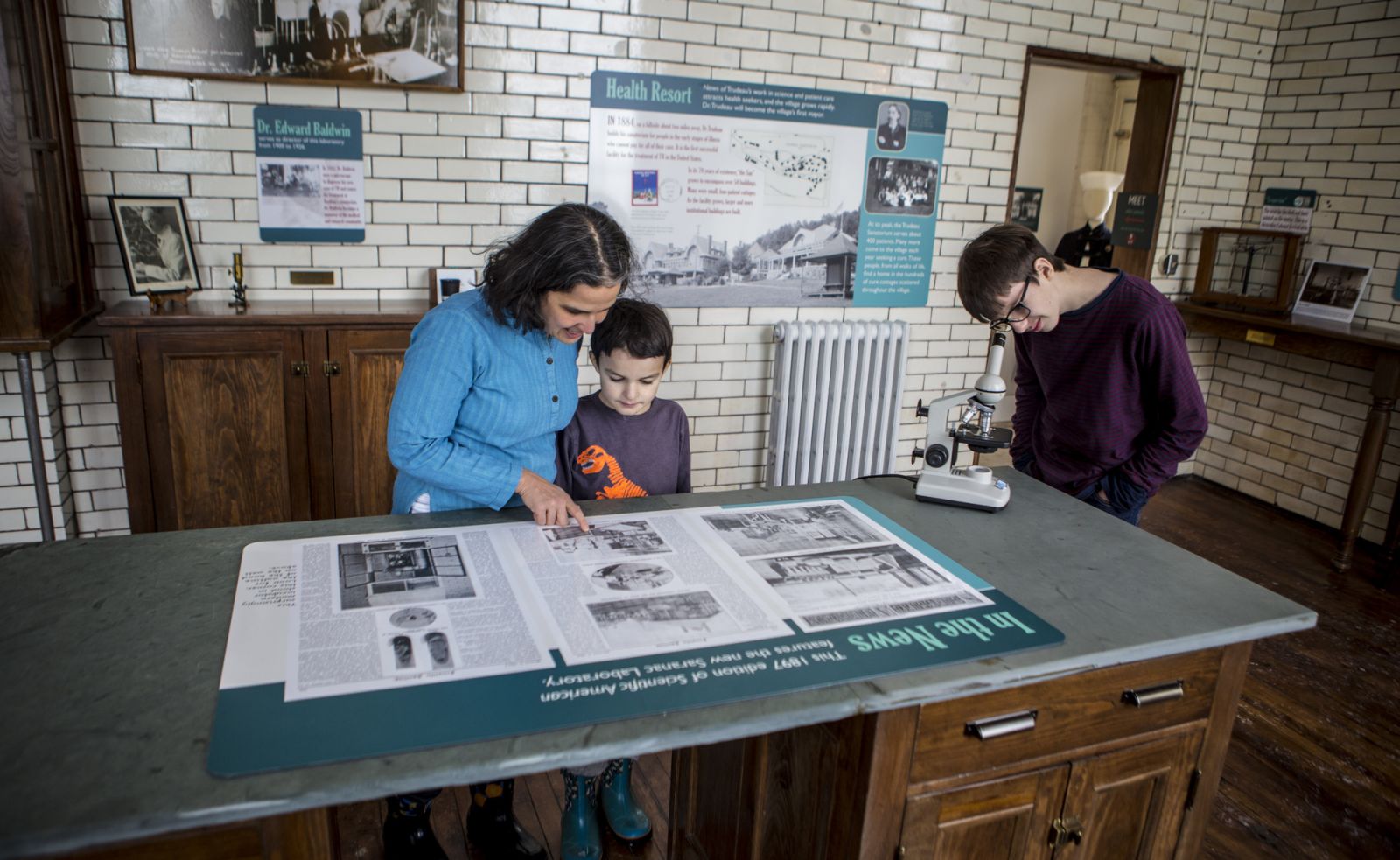
Among the patients who were treated in the village — at Dr. Trudeau's Adirondack Cottage Sanitarium, which grew from one building to dozens, and private cure cottages — were the poet Adelaide Crapsey, Scottish author Robert Louis Stevenson, and a group of Norwegian sailors who became ill during World War II.
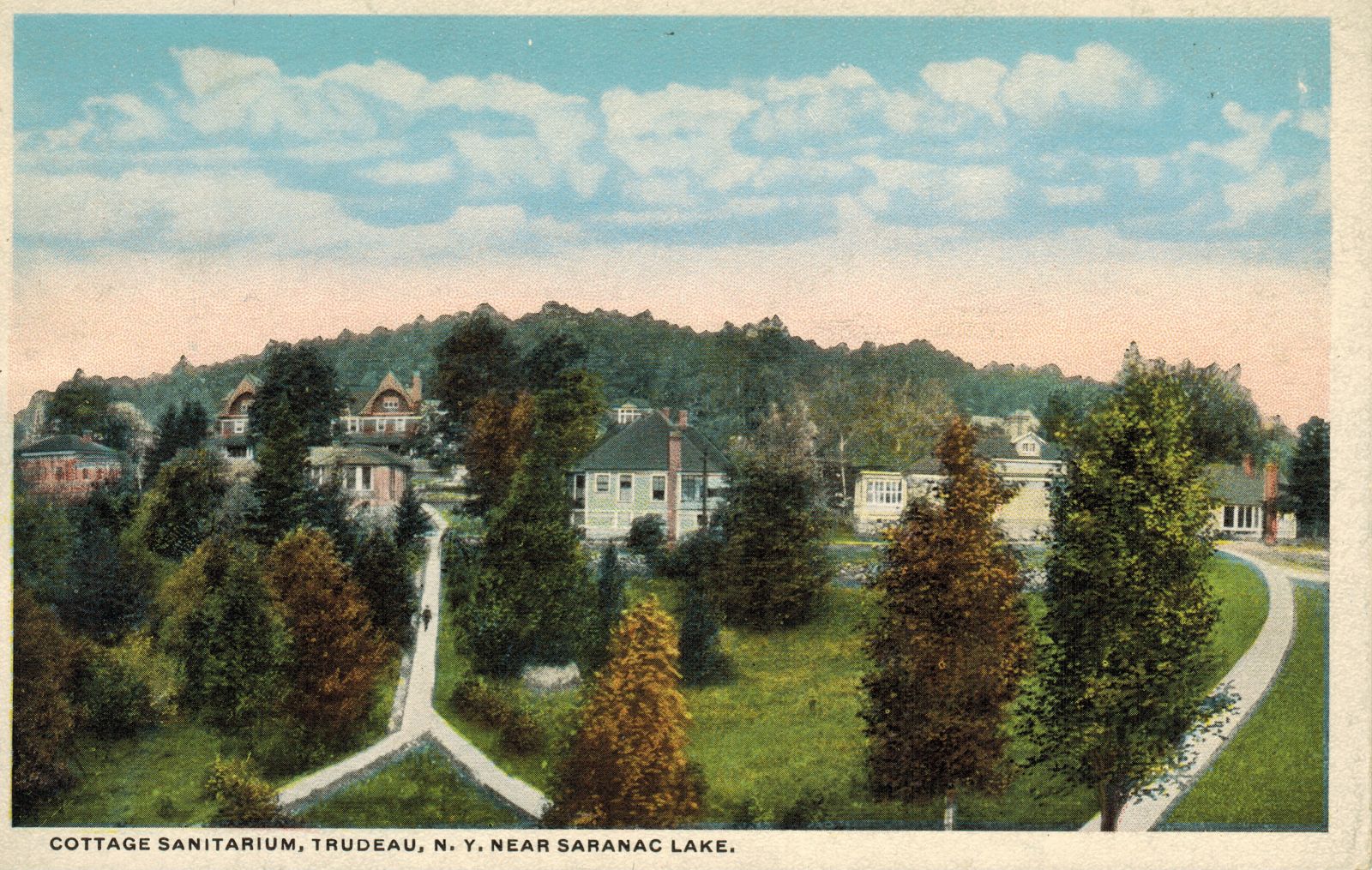
Historic Saranac Lake offers special guided tours of historic downtown, the exterior of the former Cottage Sanitarium, and Little Red, Dr. Trudeau's first cure cottage. HSL also hosts a popular monthly breakfast club at Hotel Saranac, and displays temporary exhibits at the museum. The current exhibit, Art of the Cure, celebrates the history of the arts in Saranac Lake, with particular focus on the arts and crafts taught to tuberculosis patients as occupational therapy. This therapy led to a number of patients becoming talented craftspeople whose work is still in demand.
Architectural gems and famous names
Take a walk or drive through Saranac Lake — keeping your eyes on the road, of course — and you'll notice handsome houses, graceful shopfronts, and more than a few buildings bearing a distinctive oval sign designating that space as being on the National Register of Historic Places. If it seems like we have a lot of historic buildings, it's because we do and each one is unique.
Stop downtown and wander through Hotel Saranac's Great Hall, glowing after a painstaking restoration project. Sip a 1920's-inspired cocktail or dig in to a tasty meal, savoring the hotel's classic vintage feel.
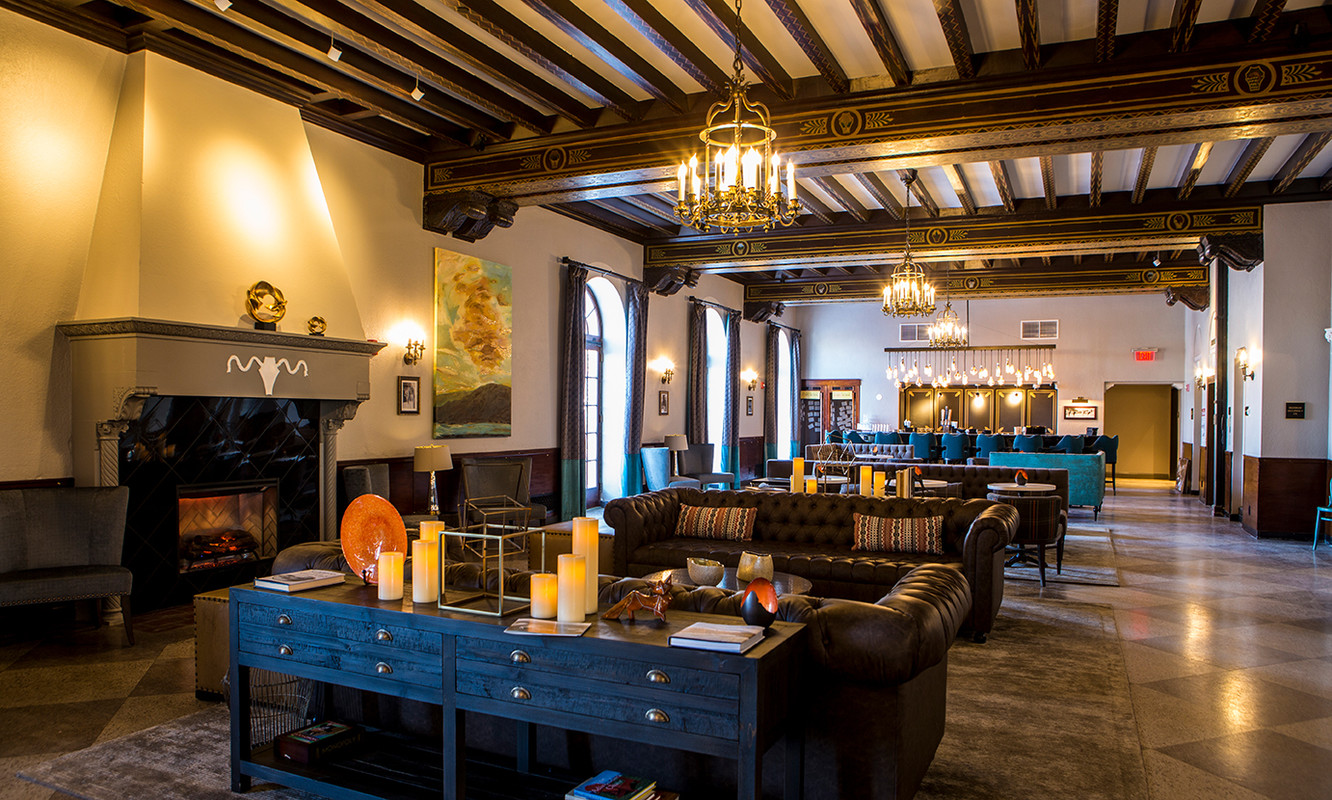
Saranac Lake is home to several beautiful churches, including the Church of St. Luke, the Beloved Physician. Built in 1878, St. Luke's was the village's first church and it's creation was helped along by Dr. Trudeau, who lived across the street. Although the church has been expanded and updated, it still bears many of the original features and design elements.
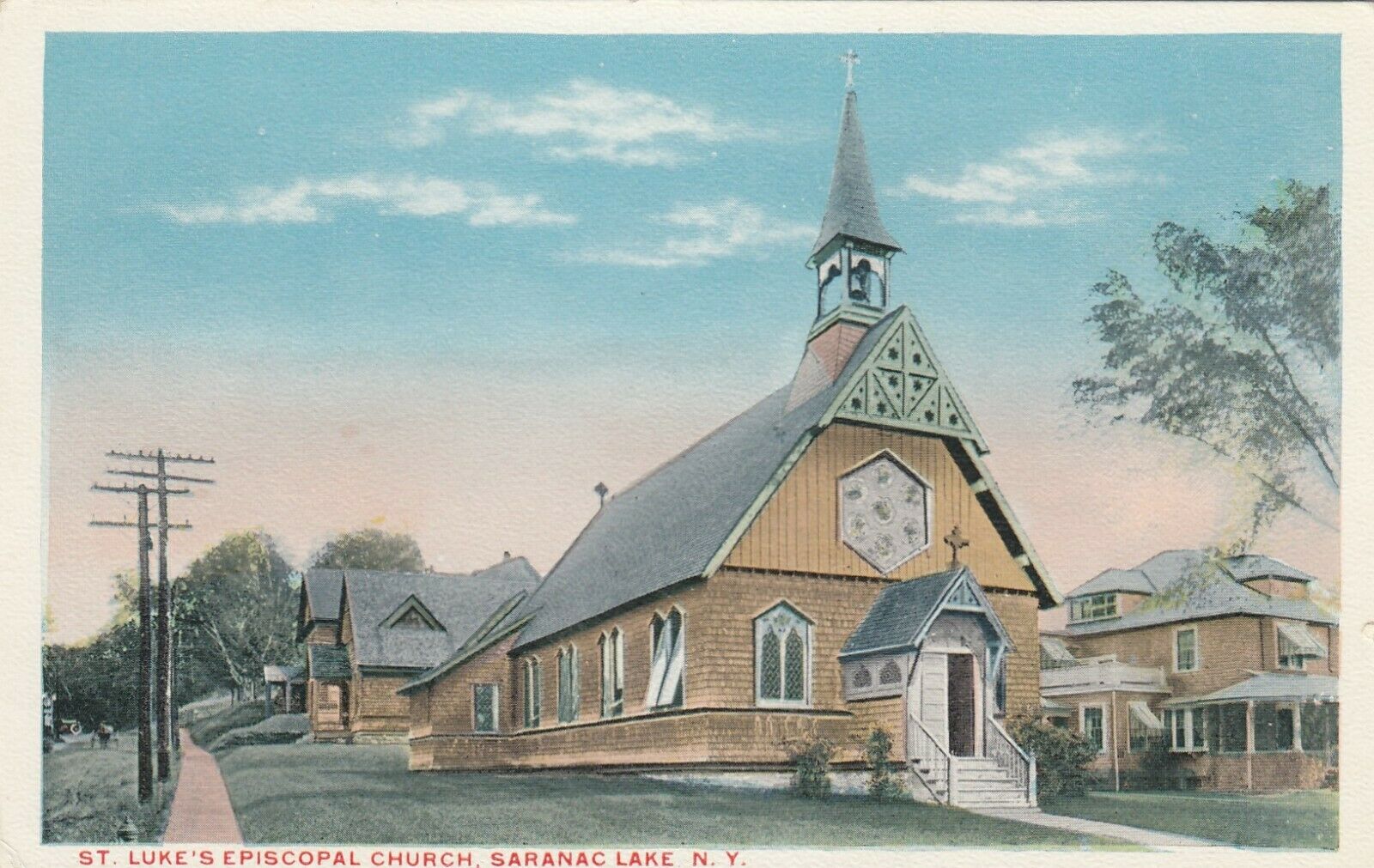
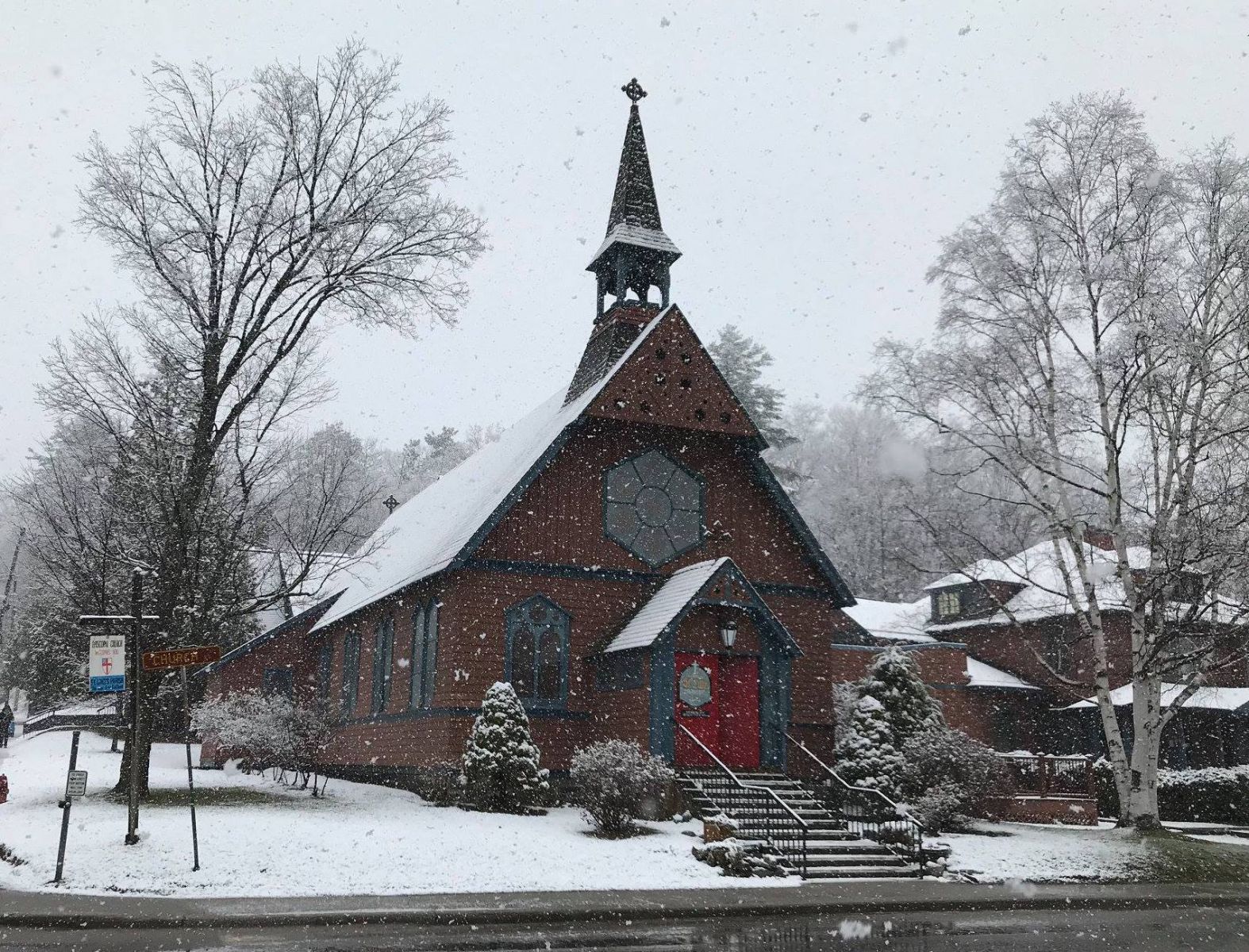
Downtown bonus activity: learn about some of the famous faces that lived in and traveled to Saranac Lake by picking up a copy of the village's Walk of Fame brochure, and follow the walk's plaques through downtown. Learn about our connection to Albert Einstein, Bela Bartok, and actress Veronica Lake, among others.
"The Penny Piper of Saranac Lake"
Of all the notable people to have spent time in Saranac Lake, one of the most celebrated is author Robert Louis Stevenson. The Scottish author who created the novels Kidnapped, Treasure Island, and one of my favorites, The Strange Case of Dr. Jekyll and Mr. Hyde, actually spent one phenomenally cold winter living and writing in Saranac Lake. With a step inside a quaint cottage overlooking the Saranac River, you too can travel back to that cold winter, no mittens required.
Stevenson, his wife, mother, and stepson spent the winter of 1887-88 in a rented cottage, known as the Baker Cottage and somewhat remotely removed from downtown. Stevenson referred to the house as "a hatbox on a hill." It is now preserved as the Robert Louis Stevenson Cottage, home to an extensive collection of memorabilia — the largest in the United States — about Stevenson's life and the time he spent in the village.
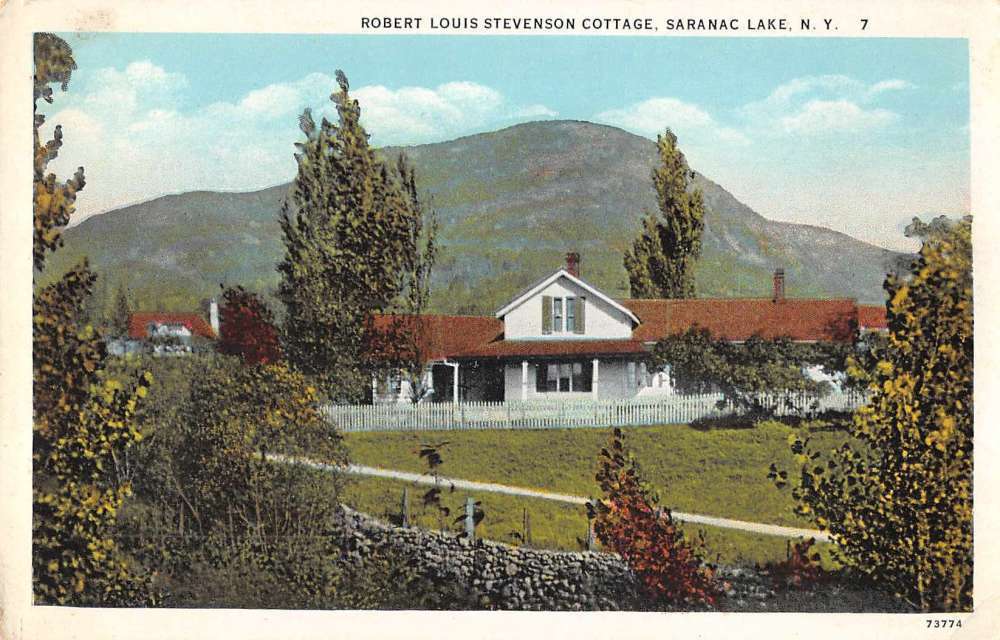
Whether you are a fan of Stevenson's work or simply interested in history, throughout its four rooms the cottage has plenty to inspire and intrigue, including the desk Stevenson wrote at and the bed he slept and worked in. View a rich collection of rare photographs, inscribed books, clothing, furniture Stevenson and his family used, and much more. The collection also includes unusual, one-of-a-kind artifacts from Stevenson's life, such as illustrated woodblocks he carved himself and a lock of his baby hair. The cottage celebrates all aspects of Stevenson's life, from his childhood to his final years in Samoa, under the guidance of curator Mike Delehant.
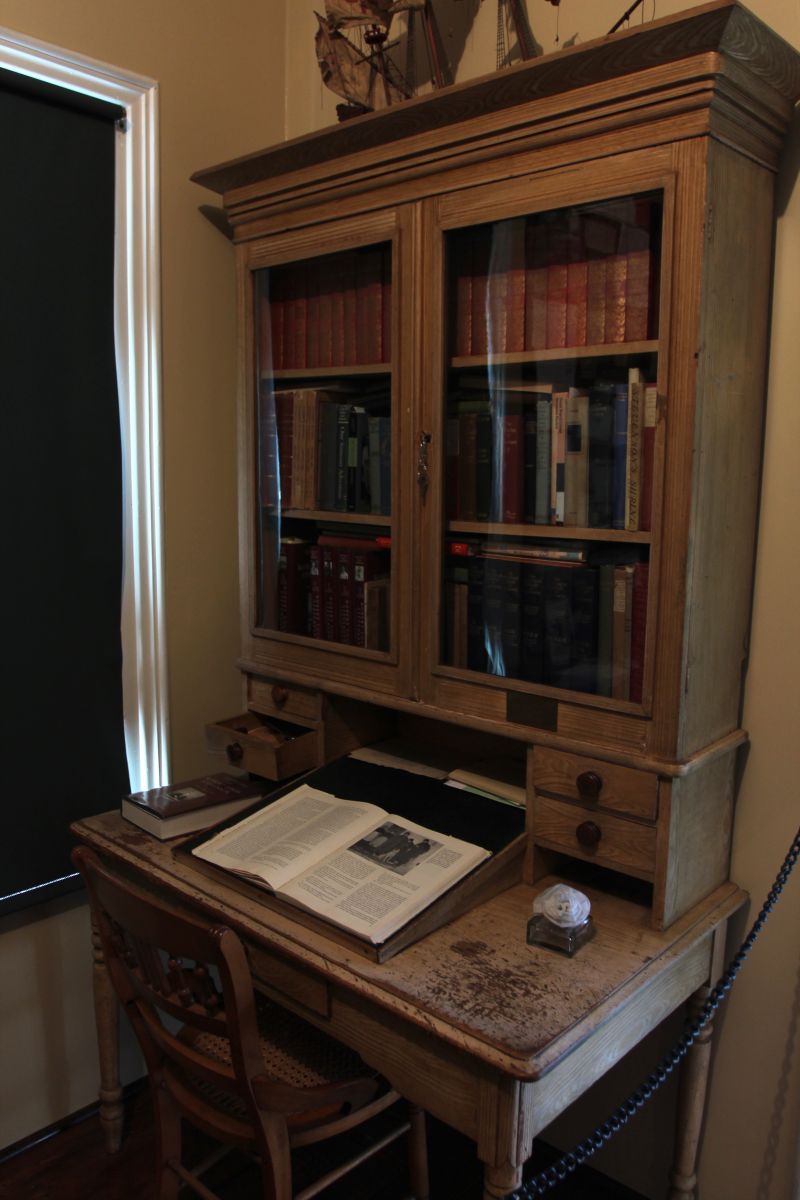
Stevenson's experiences in the village, which he selected over his original destination of Colorado Springs, were immortalized by Stephen Chalmers' story "The Penny Piper of Saranac Lake" — Stevenson "tootled" on a penny whistle, poorly — illustrated by an image of a sculpted plaque created by Stevenson's great admirer, Gutzon Borglum, the man who designed the sculpted faces on Mount Rushmore. You can see both the penny whistle and the plaque at the cottage and learn about the stories behind them, as well as the many other artifacts.
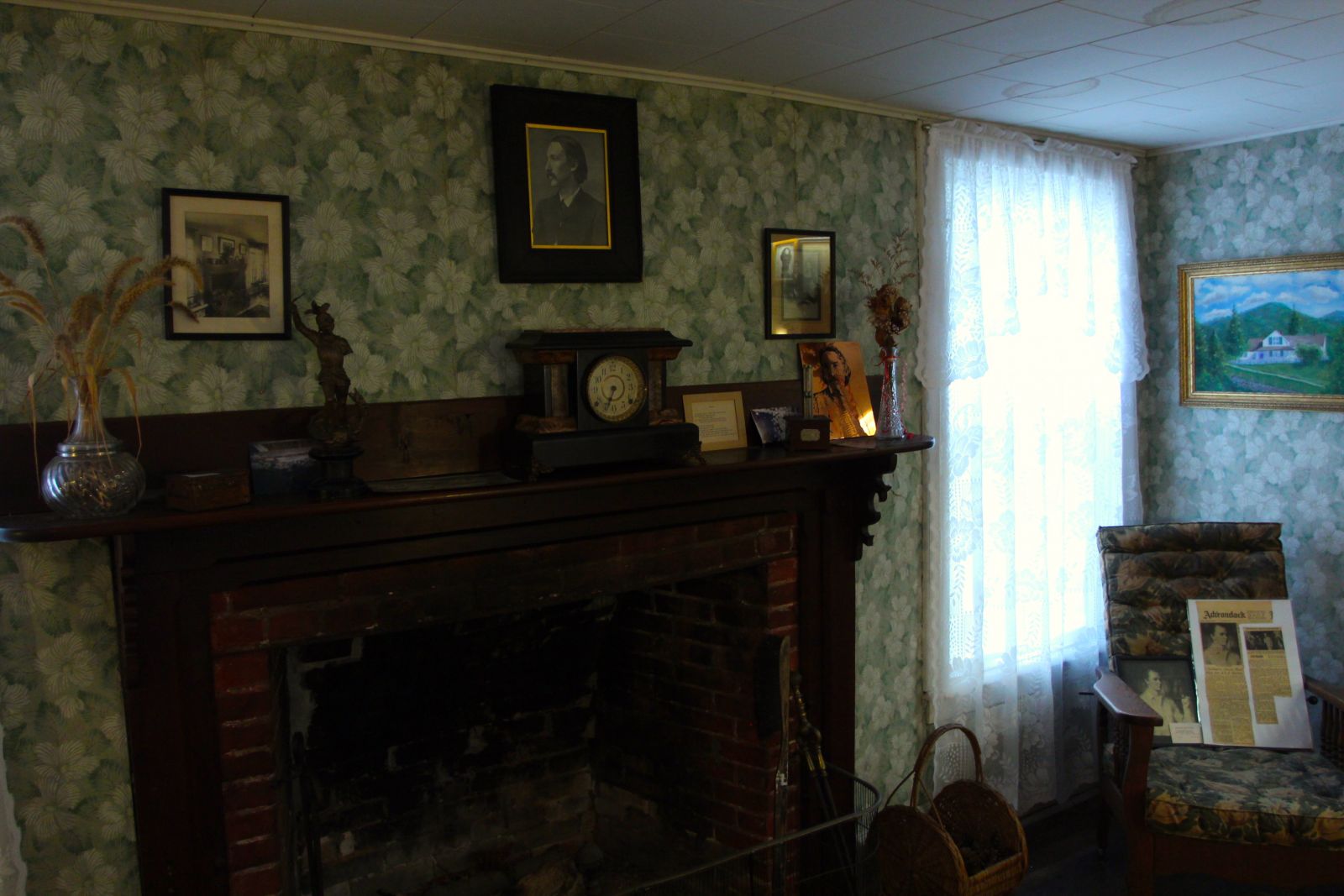
Create your own adventure into Saranac Lake's past! Start by checking out our diverse lodging options by browsing our historic hotels and Adirondack cottages and other attractions.











